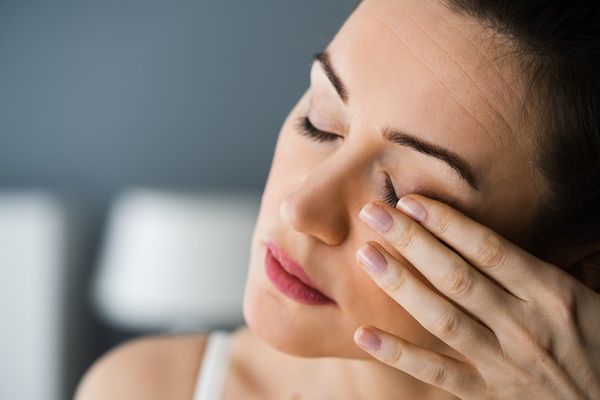I recently was bothered by a tiny black fly that kept zooming back and forth in front of my eyes. I tried swatting it away repeatedly, but it kept dodging my efforts. That bug is persistent and so quick, I thought, before finally giving up.
But when the fly came back and pulled the exact same thing the next day, and the day after that, I realized it wasn't a fly at all. And eventually it stopped hovering (or I stopped noticing).
It was a floater.
Small, dark and shadowy, floaters come in various shapes resembling spots, squiggly lines or thread-like strands. Sometimes they'll look like cobwebs or rings or small specks of dust.
Just like many other conditions, most floaters are part of the natural aging process.
They're more of an annoyance than a danger—and more common than you may realize. Most people have them and may not even notice them, until they get more persistent or more obvious. It's entirely possible you've had them for a long time and have learned to just ignore them.
Curious about this common but pesky phenomenon? Here are some facts about floaters.
-
Floaters are caused by a slowly shrinking vitreous (a gel-like substance that helps maintain your eye's round shape).
-
Although they're annoying, floaters shouldn't interfere with your vision.
-
Floaters may be more obvious when you're looking at something bright, like a blue sky or a white wall or sheet of paper.
-
You're more likely to get floaters if your eyes have been injured or inflamed, or you are nearsighted, have diabetes or have had surgery for cataracts.
-
Some floaters will go away on their own in a few weeks or months. But once you have them, it's pretty likely they'll return in some shape or form at some point.
-
A medical exam can examine floaters more closely and determine whether or not they're dangerous and a sign of something more serious, like a retinal tear or detachment. (Many times, the first sign of a tear or detachment is a sudden increase in the size and number of floaters, or the sudden appearance of light flashes or peripheral loss of vision.)
-
If floaters become too numerous and dense and seriously interfere with vision, they can be surgically removed (this is known as a vitrectomy, a procedure that removes floaters from the vitreous and replaces the fluid with a salt solution). There are some clinics that also treat floaters with a laser, but this treatment is more common in the United Kingdom, and its safety and effectiveness are not certain.
If you're bothered by the occasional cobweb, flying insect or squiggly line, keep an eye on their frequency and intensity and get it checked out if there's a sudden or drastic change. Many times, moving your eyes can shift the fluid around and make the floaters settle for a while. Other times, your brain grows accustomed to the intrusion, and learns to ignore it.
More reading:
What You Need to Know About Chronic Dry Eye
'Eye Freckles' May Predict Sun-Related Problems
Boomers Doing Better at Avoiding Eye Disease of Aging







